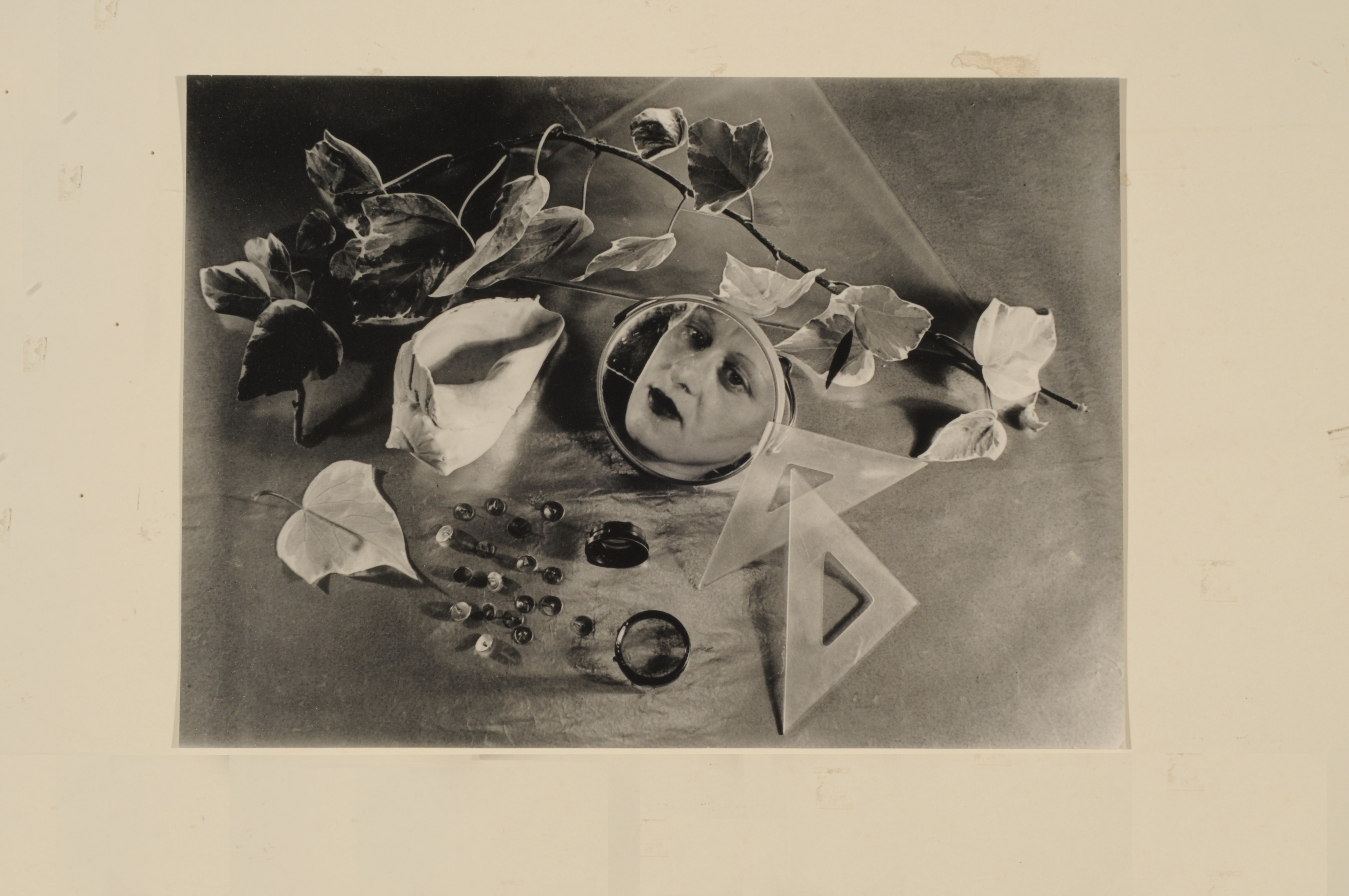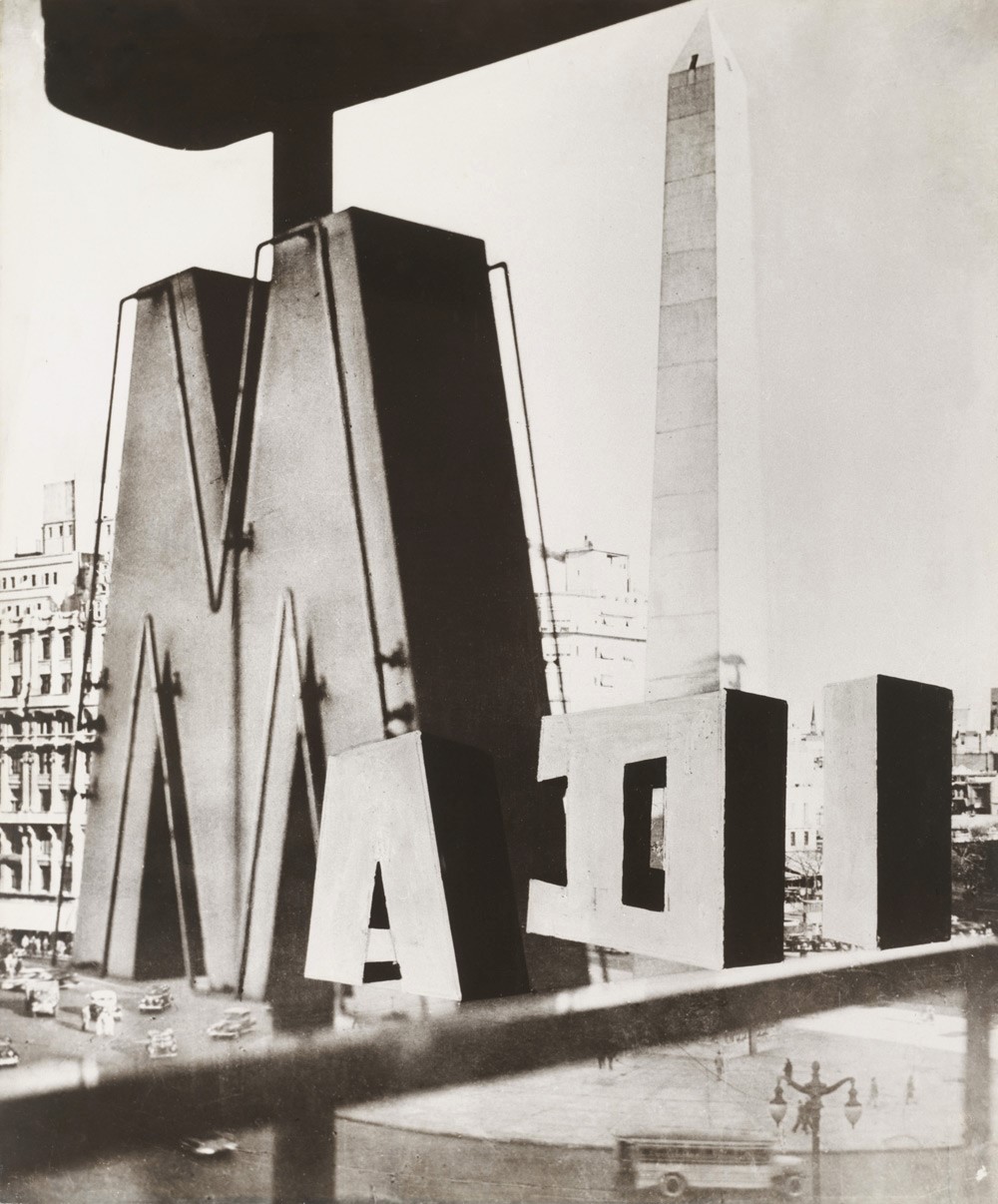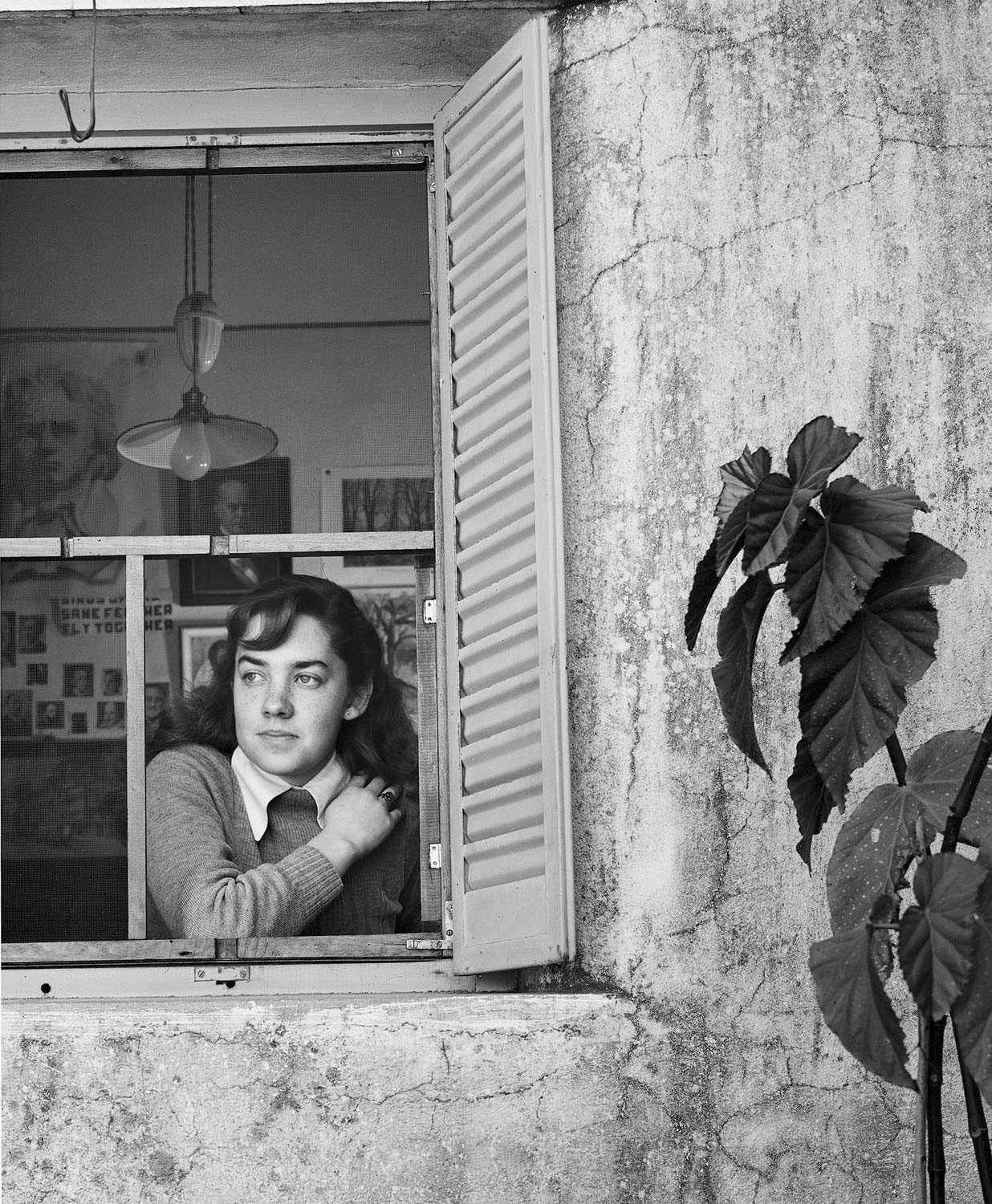Archive
Grete Stern
- Grete
- Stern
- 09-05-1904
- Wuppertal (DE)
- 24-12-1999
- Buenos Aires (AR)
- Photographer
Grete Stern is one of the photographers that represent modern photography in Argentina. Her house in Ramos Mejía was a meeting place for local and foreign artists and intellectuals.
Word Count: 30

Grete Stern, Autorretrato, 1943, photograph, 21,9 x 30,5 cm. Museo Nacional de Bellas Artes, Buenos Aires (© The Estate of Horacio Coppola/Galería Jorge Mara • La Ruche, Buenos Aires). 
Grete Stern, Photomontage for Madí, Ramos Mejía, Argentina, 1946–47, Gelatine silver print, 59.8 x 49.4 cm. (via Wikimedia Commons, © The Estate of Horacio Coppola/Galería Jorge Mara • La Ruche, Buenos Aires). 
Grete Stern, María Elena Walsh, 1947, photograph, 24,5 x 20,5 cm. Museo Nacional de Bellas Artes, Buenos Aires (via Wikimedia Commons, © The Estate of Horacio Coppola/Galería Jorge Mara • La Ruche, Buenos Aires). Bertúa, Paula. “Devenires de una artista migrante: el destino argentino de Grete Stern.” IAHMM Revista de Historia Bonaerense, year XXIII, no. 46, 2017, pp. 6–14. issuu, https://issuu.com/revistahistoriabonaerense/docs/revistabonaerense46nuevapdfbaja__ta. Accessed 13 April 2021.
Grete Stern: Obra fotográfica en la Argentina, exh. cat. Museo de Arte Hispanoamericano Isaac Fernández Blanco, Buenos Aires, 1995, n.p.
Marcoci, Roxana. “Photographer Against the Grain: Through the Lens of Grete Stern.” From Bauhaus to Buenos Aires: Grete Stern and Horacio Coppola, edited by Roxana Marcoci and Sarah Hermanson Meister, exh. cat. The Museum of Modern Art, New York, 2015, pp. 21–36.
Príamo, Luis. “La obra de Grete Stern en la Argentina.” Grete Stern: Obra fotográfica en la Argentina, exh. cat. Museo de Arte Hispanoamericano Isaac Fernández Blanco, Buenos Aires, 1995, n.p.
Word Count: 129
Archive Grete Stern, Buenos Aires.
Word Count: 5
Buenos Aires, Argentina (1935)
Av. Córdoba 363, Buenos Aires (studio); Calle Hilario Ballesteros 1054, Villa Sarmiento district, Morón (often attributed to Ramos Mejía) (residence and studio).
- Buenos Aires
- Laura Karp Lugo. "Grete Stern." METROMOD Archive, 2021, https://archive.metromod.net/viewer.p/69/2950/object/5138-11006983, last modified: 16-09-2021.
-
Gyula KosiceSculptorPoetBuenos Aires
Born in Kosice (Slovakia), the four-year-old future artist Gyula Kosice reached Buenos Aires by ship in 1928. He forged ties of friendship with Grete Stern, Horacio Coppola and other artists.
Word Count: 29
Gertrudis ChalePainterBuenos AiresGertrudis Chale was an Austrian painter based in Buenos Aires, where she achieved integration into the local art scene and spent years travelling throughout the region.
Word Count: 26
Horacio CoppolaFilmmakerPhotographerBuenos AiresBorn in Buenos Aires, Horacio Coppola is one of the photographers who represent modern photography in Argentina.
Word Count: 17
Luis SeoanePainterMuralistIllustratorLawyerBuenos AiresLuis Seoane is an artist mainly known for his murals, paintings and illustrations. He spent his childhood and youth in Galicia, before settling in Buenos Aires in 1936.
Word Count: 27
María Elena WalshPoetSong-writerSingerBuenos AiresMaría Elena Walsh was an Argentine singer-songwriter, musician, writer, composer and poet who left her mark on several generations of Argentines through songs such as Manuelita and La Reina Batata.
Word Count: 31
Arte Madí PhotomontagePhotomontageBuenos AiresConceived in 1947 as the logo of the Arte Madí group, this photomontage was devised by two masters of the Argentinian avant-garde, Gyula Kosice and Grete Stern.
Word Count: 26
Buenos Aires 1936. Visión fotográficaPhotobookBuenos AiresFor the commemoration of the 400th anniversary of the foundation of Buenos Aires, photographer Horacio Coppola was commissioned by its municipality to portray the city.
Word Count: 25
Victoria OcampoWriterBuenos AiresVictoria Ocampo was one of the most influential intellectuals in Argentina. Her home became a key meeting place for exiles and locals and deeply impacted the artistic milieu.
Word Count: 28
Clément MoreauGraphic ArtistBuenos AiresGerman-born Clément Moreau had to exile to Buenos Aires due to his political activism. There, he was well integrated into the artistic milieu and published his caricatures in many publications.
Word Count: 31
Ellen AuerbachPhotographerNew YorkWhen she arrived in New York in 1937, the German-born photographer Ellen Auerbach (formerly Rosenberg) had already passed through exile stations in Palestine and Great Britain.
Word Count: 25
Annemarie HeinrichPhotographerBuenos AiresAnnemarie Heinrich is one of the photographers that represent modern photography in Argentina, she co-founded the artistic group La Carpeta de los Diez (The Folder of the Ten) in 1953.
Word Count: 29
SurMagazineBuenos AiresIn 1931, Victoria Ocampo founded Sur, a literary magazine and publishing house aligned with the anti-fascist cause, which was to become a major hub for intellectual exchanges in Buenos Aires.
Word Count: 29